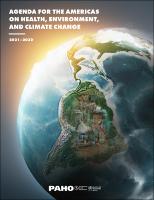Guyana’s precipitation pattern is influenced primarily by the seasonal shift of the Inter-Tropical Convergence Zone (ITCZ), however, on an inter-annual and decadal basis, the country experiences the El-Niño Southern Oscillation (ENSO) effects. Coastal areas are dominated by a ‘tropical wet’ marine climate where mean annual precipitation is greater than 2000 mm/year, while the savannah experiences mostly a drier ‘tropical wet-dry’ climate with mean precipitation of 1400–1800 mm/year (2).
Guyana is vulnerable to climate change and already experiences severe floods and droughts. Other impacts include sea level rise, changing precipitation patterns, increased temperatures, and extreme weather events that pose risks to human health, through the spread of vector-borne diseases, foodborne and waterborne diseases, food and economic insecurity, and saltwater intrusion of aquifers.
The Guyana Government has demonstrated unequivocal commitment to global efforts in climate change mitigation and adaptation. Notable initiatives include the Low Carbon Development Strategy in 2009 (3), the Green State Development Strategy (2017), the Guyana Climate Change Policy and Action Plan (Draft) 2019 (4), and the National Adaptation Plan (Draft, 2019) – all of which will provide the point of reference for Guyana to build resilience to climate change, adapt to the health effects of climate change, and maximize the health co-benefits available through climate mitigation and adaptation.













